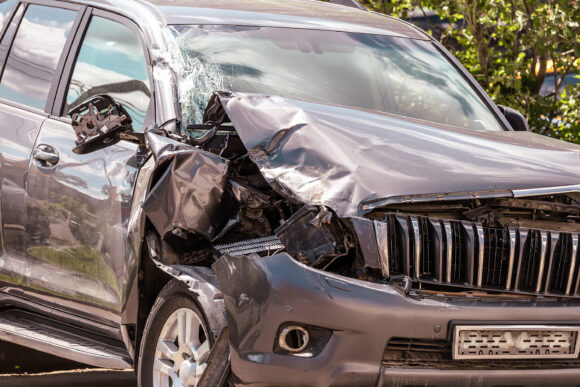Motor vehicles with higher, more vertical front ends raise risks for pedestrians, according to a highway safety organization.
The Insurance Institute for Highway Safety said that whatever the nose shape, pickups, SUVs and vans with a hood height greater than 40 inches are about 45% more likely to cause fatalities in pedestrian crashes than cars and other vehicles with a hood height of 30 inches or less and a sloping profile.
But among vehicles with hood heights between 30 and 40 inches, a blunt, or more vertical, front end increases the risk to pedestrians.
The study released Tuesday arrives with roadway deaths in the U.S. mounting despite government test data showing vehicles have been getting safer. While the number of all car-related fatalities has trended upward over the last decade, pedestrians and cyclists have seen the sharpest rise: over 60% between 2011 and 2022.
IHS researchers looked at 17,897 crashes involving a single passenger vehicle and a single pedestrian. Using Vehicle Identification Numbers to identify the crash-involved vehicles, they calculated front-end measurements corresponding to 2,958 unique car, minivan, large van, SUV and pickup models from photographs. They excluded vehicles with pedestrian automatic emergency braking systems and controlled for other factors that could affect the likelihood of a fatality, such as the speed limit and age and sex of the struck pedestrian.
Vehicles with hoods more than 40 inches off the ground at the leading edge and a grille sloped at an angle of 65 degrees or less were 45% more likely to cause pedestrian fatalities than those with a similar slope and hood heights of 30 inches or less. Vehicles with hood heights of more than 40 inches and blunt front ends angled at greater than 65 degrees were 44% more likely to cause fatalities.
“Manufacturers can make vehicles less dangerous to pedestrians by lowering the front end of the hood and angling the grille and hood to create a sloped profile, ” IIHS Senior Research Transportation Engineer Wen Hu, the lead author of the study, said in a statement on Tuesday. “There’s no functional benefit to these massive, blocky fronts.”
While sloping front ends did not reduce the risk posed by vehicles with the tallest hoods, they did make a difference for vehicles with hood heights of 30 inches to 40 inches.
There was a 25% increase in the risk of a fatality for vehicles with flat hoods — those with angles of 15 degrees or less — compared with vehicles with more sloping hoods. That was true regardless of height and front-end shape.
Was this article valuable?
Here are more articles you may enjoy.


 NYC Sues Delivery App Over Lost Pay in New Mamdani Crackdown
NYC Sues Delivery App Over Lost Pay in New Mamdani Crackdown  Palantir Poaching Suit Called ‘Scare’ Tactic by Ex-Employees
Palantir Poaching Suit Called ‘Scare’ Tactic by Ex-Employees  JPMorgan Wins Gender Pay Gap Dispute Against London Analyst
JPMorgan Wins Gender Pay Gap Dispute Against London Analyst  California Bill Would Require Insurer Claims Handling Plans, And Double Penalties
California Bill Would Require Insurer Claims Handling Plans, And Double Penalties 